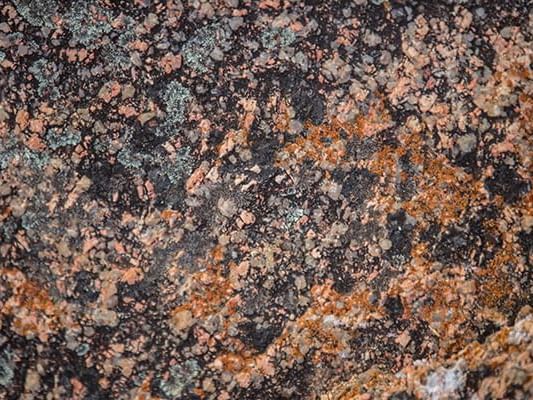Pink Granite
One of the most recognisable features of Freycinet National Park is the rugged profile of The Hazards Mountains—a string of pink-hued granite peaks overlooking the township of Coles Bay.
The Freycinet Peninsula, which is more than 400 million years old, is formed of two enormous chunks of granite, connected by a narrow, sandy isthmus. If we could gaze down on Freycinet from high above, and look beneath the skin of the earth, we’d see that this seam of granite extends from Wilson’s Promontory in Victoria, south through the Kent Group of islands and along the Tasmania’s east coast as far as the Tasman Peninsula.
Thinking pink
So why is Freycinet’s granite pink? It comes down to the rock’s main ingredient—a rose-coloured form of the mineral feldspar, known as orthoclase. Feldspar is one of the three common minerals in Freycinet’s granite, along with micas (which is black) and quartz (which is white). As you walk within the national park, take a minute to look closely at the granite and you’ll clearly see the individual colours of these three components.
An artwork in stone
The colourful combination of these minerals has made Freycinet granite a much sought-after architectural material. In 1934, Italian stonemasons Mario and Biagio Zanchetta established a site at The Fisheries near Coles Bay to commercially quarry Freycinet’s pink granite. The stone was painstakingly extracted by hand for many years, before explosives were later used to blast the rock from the earth. It was backbreaking and dangerous work, but the quarry operated until the 1970s, when it was finally shut down due to financial pressure and safety and environmental concerns.
Freycinet granite is a feature in some of Tasmania’s most prominent public buildings, including the Marine Board building and Commonwealth Bank head office in Hobart, and was also used in construction of the new Parliament House in Canberra.

